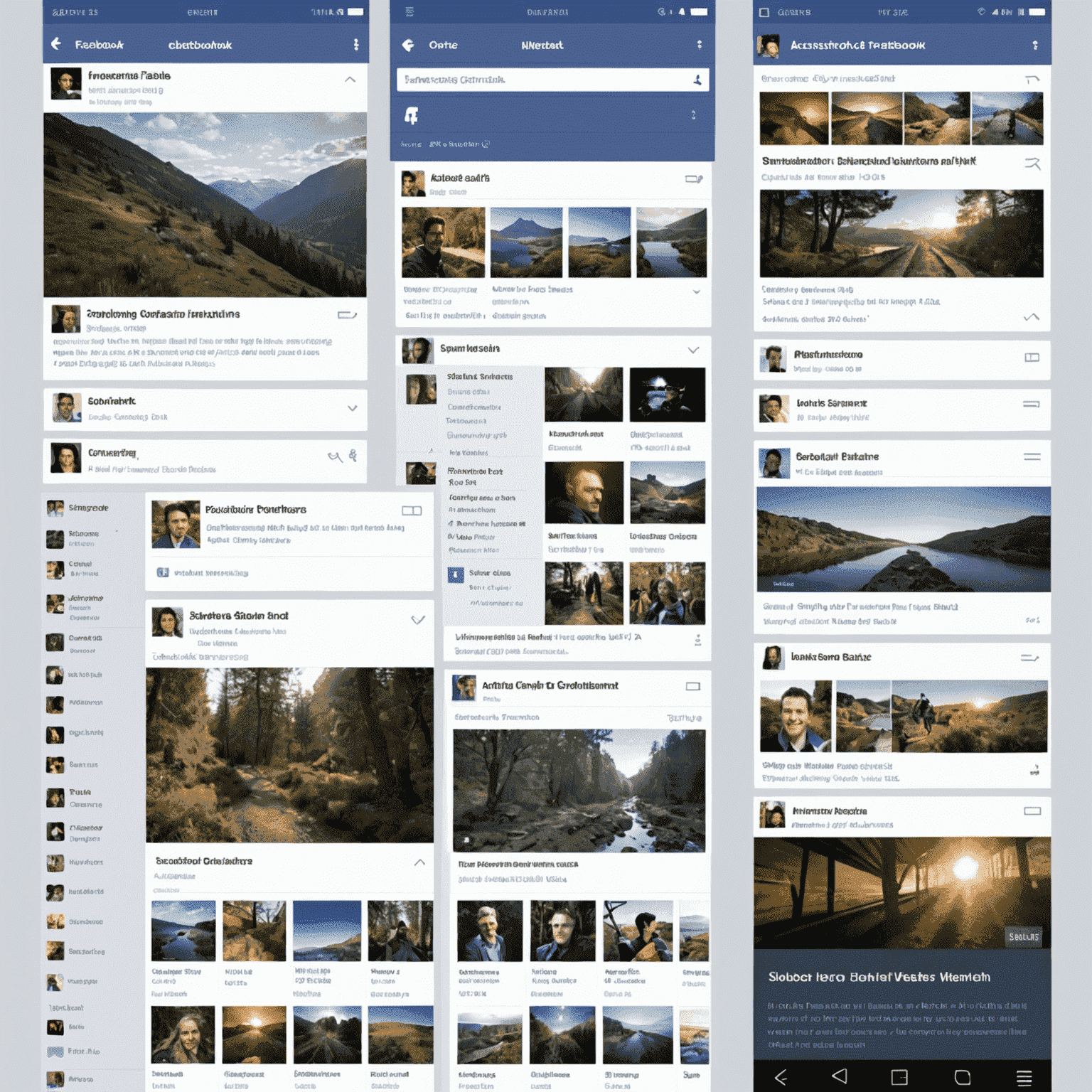The Evolution of Social Media Interfaces
Tracing the development of social media platform designs and their impact on user interaction, we explore how digital behavior and user engagement have been shaped by evolving interface patterns.

The Early Days: Customization and Chaos
In the nascent stages of social media, platforms like MySpace championed user customization, allowing individuals to express their digital identity through personalized profiles. This era of digital experience design prioritized individual expression over uniformity, often resulting in a chaotic visual landscape that challenged user flow and cognitive patterns.
The Facebook Era: Standardization and Simplicity
As Facebook rose to prominence, it introduced a paradigm shift in social media interface design. The platform's clean, standardized layout prioritized content and connections over personalization. This shift in design psychology focused on creating a universal user experience, enhancing engagement strategies and facilitating easier navigation and interaction.

Mobile-First: The Instagram Revolution
The advent of smartphones ushered in the era of mobile-first design, exemplified by Instagram's meteoric rise. This platform's interface was built around touch interactions and visual content, fundamentally altering user behavior mapping and attention cycles. The focus on immediate, visual gratification reshaped digital motivation and reward mechanics in social media.
The Current Landscape: Algorithmic Feeds and Infinite Scrolling
Today's social media interfaces are characterized by algorithmic content curation and infinite scrolling. These design choices, rooted in behavioral design principles, aim to maximize user engagement and retention. By leveraging psychological triggers and feedback loops, modern platforms create addictive experiences that keep users coming back for more.

The Future: Immersive and Adaptive Interfaces
Looking ahead, social media interfaces are poised to become more immersive and adaptive. Virtual and augmented reality technologies promise to revolutionize how we interact with digital content and each other. Meanwhile, AI-driven interfaces may offer personalized experiences that adapt in real-time to individual user preferences and behaviors, further blurring the lines between digital and physical realities.
Conclusion: The Ongoing Interplay of Design and Behavior
The evolution of social media interfaces reflects a complex interplay between design decisions and user behavior. As we continue to shape these digital spaces, it's crucial to consider the ethical implications of engagement strategies and their impact on society. The future of social media design lies in striking a balance between user engagement and digital well-being, creating interfaces that enhance our lives without dominating them.